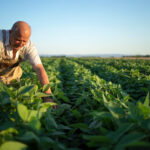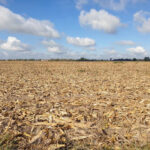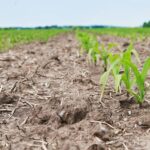Precision farming is no longer limited to large-scale commercial agriculture. Thanks to advances in affordable technology, smallholder farmers can now access powerful tools that help them increase yields, reduce waste, and improve efficiency. By using data-driven farming methods, smallholders can make smarter decisions about planting, irrigation, pest control, and harvesting.
One of the most valuable tools in precision farming for smallholders is the mobile farming app. These apps allow farmers to record planting dates, monitor weather patterns, track crop performance, and receive tailored advice. Applications like Plantix, AgroStar, and FarmRise are designed specifically for small-scale farmers, offering real-time diagnostics and local language support.
Soil sensors are another game-changer. These compact devices can measure soil moisture, temperature, and nutrient levels, helping farmers know exactly when and where to irrigate or fertilize. By using soil sensors, smallholders avoid overwatering or underfeeding their crops, saving both water and inputs while promoting healthier plant growth.
Drones, once seen as high-end tools, are becoming increasingly accessible to smallholders through service providers. Farmers can hire drone operators to scan their fields for crop stress, pest infestations, or disease outbreaks. These aerial images give a clear picture of field conditions, allowing for timely and targeted interventions that save both time and money.
GPS-based tools and handheld mapping devices are also proving useful for small farms. They help farmers accurately measure land boundaries, plan crop layouts, and track farm activities. With even a simple GPS tool, a farmer can prevent planting overlaps, monitor field work, and improve land management practices.
Weather forecasting tools tailored for agriculture are critical in precision farming. Smallholders can now receive hyper-local weather updates on their mobile phones, helping them plan planting, irrigation, and pest control activities with greater accuracy. Services such as aWhere and IBM Weather for Farmers provide detailed forecasts and alerts based on farm location.
Digital pest and disease diagnostic tools have also gained popularity among smallholders. By taking photos of affected crops and uploading them through diagnostic apps, farmers receive quick feedback and treatment suggestions. This rapid response helps prevent the spread of pests and diseases, reducing crop losses.
Smart irrigation kits designed for small plots are becoming more affordable and widely available. These systems use timers and sensors to deliver water precisely when and where it is needed. Smart irrigation not only saves water but also reduces labour and promotes healthier, more productive plants.
For record-keeping and financial tracking, digital farm management platforms are invaluable. Tools like Tulaa, AgUnity, and eProd help farmers manage inventory, sales, and expenses on their mobile phones. By keeping better records, smallholders improve access to credit, organize cooperative sales, and scale their operations more sustainably.
Precision farming tools are transforming the way smallholder farmers work. With the right combination of apps, sensors, and smart devices, even farmers with limited land can boost productivity, reduce costs, and make data-driven decisions. As technology becomes more affordable and user-friendly, precision agriculture is quickly becoming a practical reality for small farms around the world.







